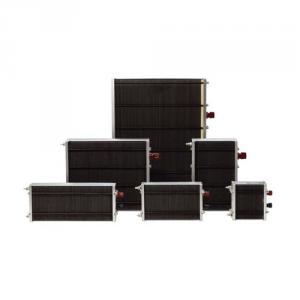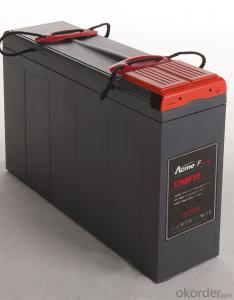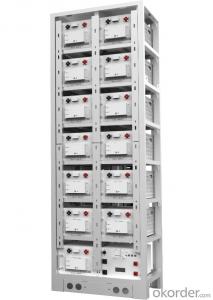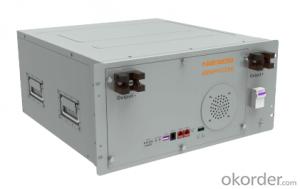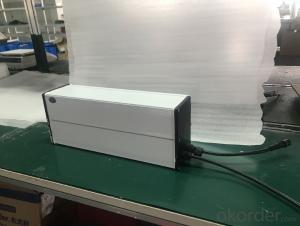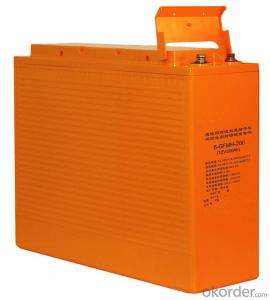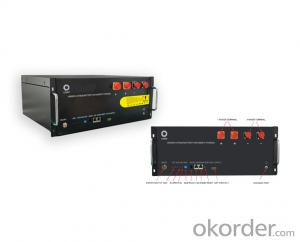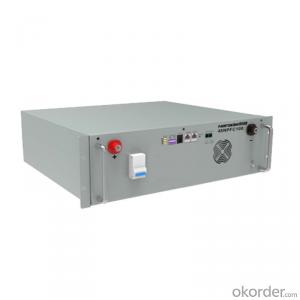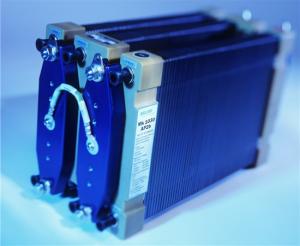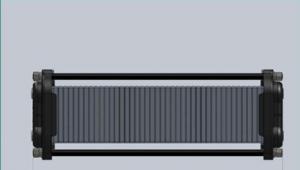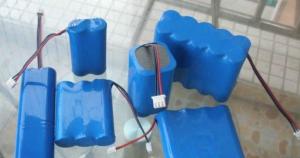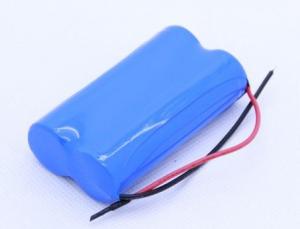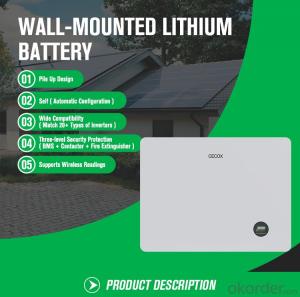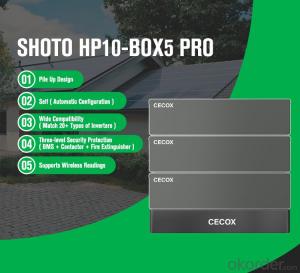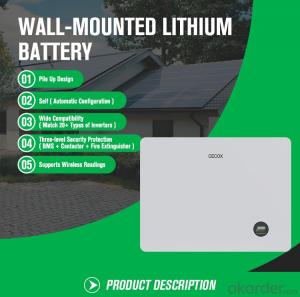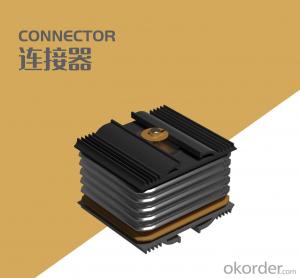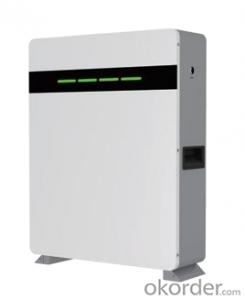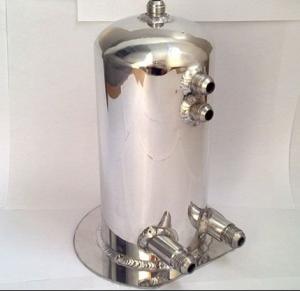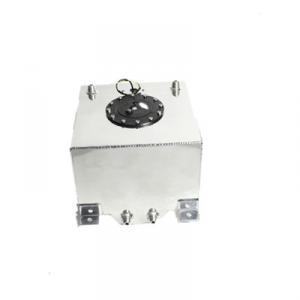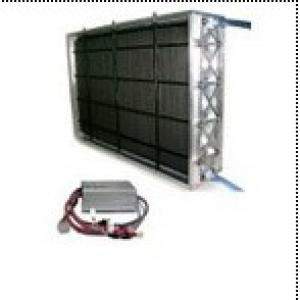Air CooLED and Self Humidification Hydrogen Fuel Cell System
- Loading Port:
- China Main Port
- Payment Terms:
- TT or LC
- Min Order Qty:
- 1 Unit unit
- Supply Capability:
- 500 Units Per Year unit/month
OKorder Service Pledge
OKorder Financial Service
You Might Also Like
EOS series PEM fuel cells offer you a practical solution on zero emission power generation. It is a upgraded version of PhyX series fuel cells. The unique technology can ensure fuel cells' more stable operation in atrocious weather and working environment.
EOS-5000 fuel cell system is a highly integrated fuel cell system with compact design, who includes: fuel cell stack, fans, IC board and electromagnetive valve. 3000W is a suitable power for the mobile applications, for instance PC, motorcycle and backup power system.
Products characters:
1. Light weight and compact design: more than 50% weight saved against conventional fuel cells;
2. Low noise: 60dB.
3. Simple system and high reliability: more than 70% accessories are saved against conventional fuel cells.
4. Quick startup, good dynamic performance: 90% time is saved to start a fuel cell.
5. Excellent environment adaptability: It could be operated and stored in sub zero degree without any external power to warm.
6. Simple control and communication policy
- Q:If you dont know just give me a llink. Please and thank you.
- Fuel cells run on Hydrogen gas-Essentially, in the reaction, Hydrogen combines with Oxygen in the atmosphere to form H2O-the reaction is 2(H2) + O2 ---2 (H2O), in the process releasing energy, used for work.
- Q:A lot of people (mostly politicians) have been pushing the hydrogen fuel cell vehicles. For many reasons this isn't the best course of action (infrastructure, expensive, dangerous, tough to transport etc.). The wast that would come out of this vehicle would simply be water vapor. Great right? What i was wondering was that if hypothetically we turned from oil to hydrogen fuel cells wouldn't the water vapor cause just as many problems as CO2. Water vapor is the most abundant and effective green house gas so how much would this fuel global warming if we begin to pump out all this water vapor? Also wouldn't there be an increase in humidity in city areas replacing the haze and smog of today? I believe strongly in global warming, if you don't go to the next question. This is a serious question and I don't want to hear, Its not a problem cause global warming is a hoax. Look at the science. For all you serious people, thanks.
- The solution is in your problem. Water vapor has a name in the atmosphere: Clouds. And clouds reflect sunlight AWAY from the earth. Which would reduce global warming, no?
- Q:How much hydrogen fuel would a fuel cell car use per mile?
- without exact parameters, like weight of car, drag, HP of driver, we can not answer. But fixing parameters it goes like this; A fuel cell is about 75% efficient. An internal combustion engine today is 30%. so a car on a fuel cell will get 2.0 to 3.0 times the mileage. BUT now for the bad news to get the hydrogen used to run a fuel cell, you lose 50%. The net is the fuel cell is equal to to or 20% better than a regular engine. NOW, H2 sells for for 100% more than gasoline, so at best, you get no better cost per dollar to losing 25%.
- Q:I was read a paper about PEM fuel cells and i encountered to MESGA that i didn't know what does it mean. Only thing that i know about that is : MESGA is Membrane Electrod Sub-Gasket Assembly, but i need more information. I will be very glad if anyone can help me about this subject.
- Yes, MESGA is Membrane Electrode Sub-Gasket Assembly. First, please look at the image of the PEM fuel cell on this wikipedia fuel cell page:
- Q:Back when it was thought of we had no way of doing it, but now, yes. News? Mit is possible. No one is doing this and I know why but it doesn't mean I am not sitting with a solution to all this. Not just for vehicles but for everything.
- Contact Ralph Nader. If you contact fuel company exectutives they will buy it from you and ignore it.
- Q:how much power does each cell contribute?A) 0.04 WB) 14.8 WC) 25 WD) 40,000 W
- c
- Q:a.) they can be designed so that they emit no pollutantsb.) they are inexpensivec.) they have never been built or usedd.) they only produce energy in short bursts
- a they are expensive to make, can produce a continual supply of energy as long as they have a supply of fuel and oxidant and they are used in some vehicles.
- Q:I am also wondering if they can help us reduce weight of vehicles as well and give cars better handling characteristics. And when it comes to range, is there a way to recharge an electric/hydro/fuel cell car's energy supply at some sort of station within the same time it takes to fill a car's tank with fuel?
- Everyone wants to believe that there is something sinister in the conventional piston internal combustion engine. Further all want to believe that there are alternate technologies that can at least equal if not greatly outperform (via better fuel economy, cleaner emissions, lower over all cost, etc.) the conventional piston internal combustion engine. Some believe there is a great conspiracy among oil and auto companies to preserve the status quo rather than lead to improvements. In reality the above hype is not borne out in fact. Numerous technical companies, Universities, Governments, and related organizations have been actively pursuing alternatives for many reasons. No one has yet been able to deliver. Fuel cells promise 90% efficiency, 3 times better that conventional piston engines. To date no long term performance has been observed and fuel cells are not considered marketable. Electric power vehicles do not have a range over approximately 100 miles and recharging takes over 8 hours. Batteries need to be replaced in 24 - 48 months at costs over $2000 which makes this technology at the current time unmarketable on a major scale. Hydrogen has to be made. Using conventional hydrocarbons as a source, although feasible, is a waste of hydrocarbons. Using water as the source is achievable but no large scale facility has been developed, suggesting there are many problems yet to be solved there. Storage and fueling vehicles with this gas is another difficulty that has to be resolved and to date is not. The short answer is we have, as a world, yet to come up with something better. This does not mean to stop trying; rather it means that we have yet to achieve the needed breakthroughs.
- Q:I'm doing a science fair project. I'm trying to convert water into electricity. I already know how to separate the oxygen from the hydrogen and how to convert the hydrogen into electricity with the fuel cell, but how powerful does the fuel cell need to be to carry out this experiment. If I have the wrong idea about the fuel cell, please explain to me the right idea.
- If it takes 2X worth of power to make hydrogen from water then you can expect to get about 1x of electricity from converting the hydrogen back into water. Efficiency might theoretically be improved to about 80% but the process will remain less efficient than storage batteries. Further most hydrogen for industrial purposes (96%) is made from fossil fuels and this is unlikely to change in the near future. Trying to legislate the supply chain would likely lead to a hydrogen black market for the cheaper source. Hydrogen only seems attractive for increasing the range for an otherwise electric vehicle. It would be far cheaper to electrify roadways and transmit power wirelessly to the EV giving unlimited range. But this would not play into the hands of the fossil fuel industry.
- Q:i drive a 96 chevy k1500 with a 305 fuel injected and i'm wanting to put a fuel cell i on it, but i dont know how. so help me out. i just need directions
- Don't bother. Hydrogen conversions are a scam. For an engine to run on hydrogen, it must be DESIGNED for hydrogen!
1. Manufacturer Overview |
|
|---|---|
| Location | Shanghai,China (Mainland) |
| Year Established | 2006 |
| Annual Output Value | US$1 Million - US$2.5 Million |
| Main Markets | North America; Southeast Asia; Western Europe |
| Company Certifications | CE Certificate; ISO9001:2008 |
2. Manufacturer Certificates |
|
|---|---|
| a) Certification Name | |
| Range | |
| Reference | |
| Validity Period | |
3. Manufacturer Capability |
|
|---|---|
| a)Trade Capacity | |
| Nearest Port | |
| Export Percentage | 61% - 70% |
| No.of Employees in Trade Department | |
| Language Spoken: | |
| b)Factory Information | |
| Factory Size: | |
| No. of Production Lines | |
| Contract Manufacturing | OEM Service Offered Design Service Offered |
| Product Price Range | |
Send your message to us
Air CooLED and Self Humidification Hydrogen Fuel Cell System
- Loading Port:
- China Main Port
- Payment Terms:
- TT or LC
- Min Order Qty:
- 1 Unit unit
- Supply Capability:
- 500 Units Per Year unit/month
OKorder Service Pledge
OKorder Financial Service
Similar products
New products
Hot products
Hot Searches
Related keywords
